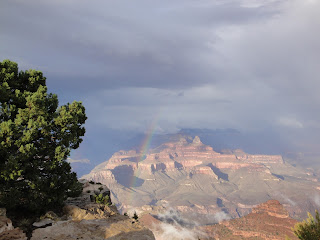It occurred to me a couple weeks ago that the practice of archaeology is a pretty abstract idea in most people's minds. What do
you think of when you imagine an archaeologist working in the field all day? It's probably a lot different from what you would expect. Yes, we dig holes, and yes, we collect artifacts - but we also take photographs, keep very exact measurements, make maps of our units, and spend a lot of time recording anything and everything about the soil.
 |
| The tools: tarp, buckets, dustpan, trowel and brush |
One of the most important things to keep in mind about archaeology is that we record
everything. We want to know exactly where we are digging horizontally (this is where satellite technologies like GIS and GPS come in handy), and vertically, which means taking constant measurements of elevation. Before you start to dig a unit, you have to plot its location on a map, and lay out its measurements with nails and string. When you're trying to get a feel for how people used the landscape in the past, you have to be exact. Most of what you'll learn from an artifact comes from its location (in archaeology jargon, its
provenience). That means digging a unit within the boundary of the strings, and also in vertical levels based on how the soil was deposited.
 |
| This unit has already been dug, but I need to document it |
Units are usually measured in meters, except occasionally at historic sites. The photo above is a 1x1 meter unit - this one was part of a
midden, or an area where people deposited their refuse. We find all kinds of things - pottery sherds, flakes from the construction of stone tools, charcoal, bone, and a whole lot of sandstone that was used for construction.
 |
| First thing's first - clean off all the crap! |
Since the student and adult participants at Crow Canyon do most of the digging, my job is to take care of residual documentation, and get units ready to backfill (throw the dirt right back in). I first clean the unit, and make sure we have reached sterile soil - that's what was there before people used the land. It usually has a high concentration of clay, so it's the yellowish-red color you can see above. This unit looks done - the brown stain in the lower half of the unit was probably caused by rodent activity.
 |
| The surface of a pit feature |
Sometimes, however, once you get through a layer of soil, you can see the imprint of a
feature, something caused by cultural activity that can't be removed from the ground and studied like an artifact. The above photo represents a pit that was cut into the yellowish-red clay by people who lived here 800-900 years ago. My job is to excavate the feature, taking lots of notes (and photos!) along the way.
 |
| I bisected the pit feature to look at a profile of the fill |
 |
| All done! A final photo for this midden unit. |
Once everything in a unit is excavated, I take final photographs of the unit. It is important to provide shade for photos with a tarp, so that the difference in color won't distort the picture (my earlier photos would not be appropriate for a site report - the ones above are much better). There should always be an arrow or a trowel indicating north in the photo, to best record the orientation.
 |
| The tools: clipboard, graph paper, pencil, ruler, line level, tape measure |
Finally, I finish up the unit by drawing a profile map to keep track of the change in soil color and texture. We use a book called the Munsell soil color chart - just imagine a bunch of paint samples in dirt colors, bound together in a book - to try to be as objective as possible about the soil color. It's more tedious work, but important for understanding how the soil layers were deposited, and thus learning about the relationship of one unit and its artifacts to another.
After that is another story - stay tuned to learn about artifact processing back in the lab!





















































